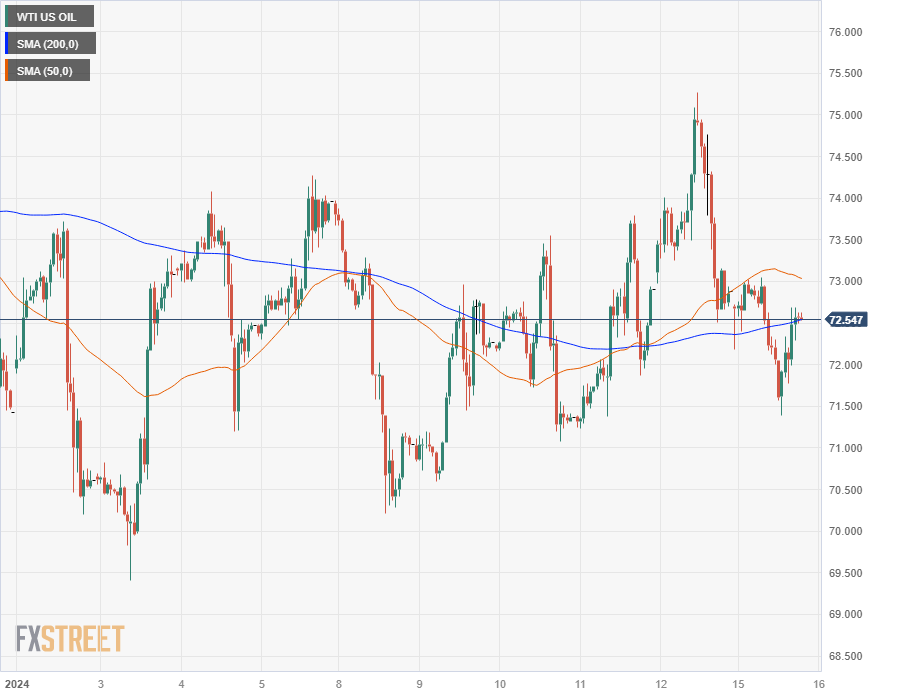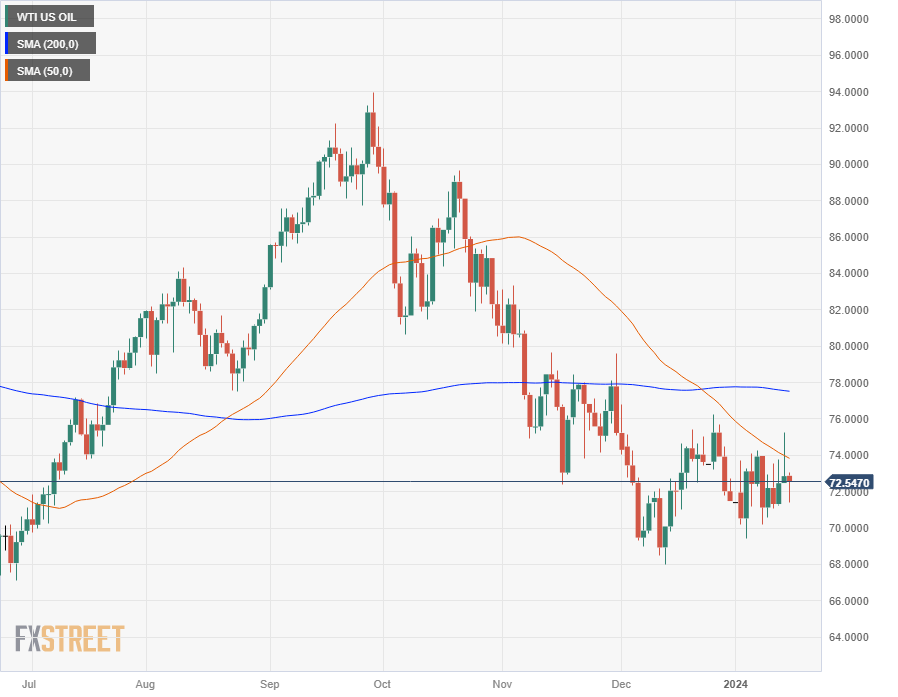Crude Oil struggles to pick a direction as geopolitical tensions and rebel attacks mire the outlook
- WTI cycles in red territory on Monday, stuck near $72.50.
- Crude Oil fundamentals continue to soften, global production continues unabated.
- Houthi rebels continue to hamper supply lines between Europe and Asia.
West Texas Intermediate (WTI) US Crude Oil saw weakness in early Monday trading, falling to a near-term low of $71.40 before rebounding to $72.50 following a fresh rocket attack on a civilian cargo ship by Iran-backed Houthi rebels in Yemen. The Houthis, a religious extremist organization with strong ties to Tehran, who recognize the Houthis as the official Yemeni government.
Ongoing energy market concerns continue to fret about potential supply chain disruptions, and the potential for production cuts from the Organization of the Petroleum Exporting Countries to take a bite out of global energy markets’ ability to meet fossil fuel demand, but record Crude Oil production from key non-OPEC countries such as the US and a massive buildup in petroleum gasoline and other Crude Oil derivatives are hampering barrel traders’ efforts to drive up Crude Oil costs.
The American Petroleum Institute (API) will be delivering their latest Weekly Crude Oil Stock counts for the week ended January 12th on Wednesday, followed by the Energy Information Administration’s (EIA) Natural Gas Storage and Crude Oil Stocks Change on Thursday.
WTI Technical Outlook
US Crude Oil has seen rough intraday trading in 2024, with barrel prices cycling in a rough channel between $74.00 and $70.50 as near-term price action sticks close to the 200-hour Simple Moving Average (SMA) near $72.50.
Daily candlesticks have WTI consolidating on the south side of the 200-day SMA at the $78.00 handle, with a descending 50-day SMA building out a technical ceiling and applying downside pressure to near-term price action from $74.00.
WTI Hourly Chart
WTI Daily Chart
WTI Technical Levels